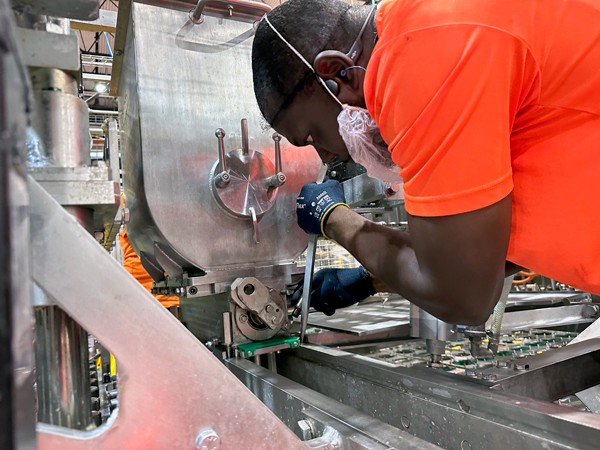
Keeping food packaging machines running at high OEE levels takes more than just good equipment—it requires structure, training and teamwork. WNA’s Field Service Engineer Charles Ackom breaks down the most effective ways manufacturers can reduce downtime, boost performance and drive continuous improvement on the line.
When food manufacturers think about increasing efficiency on the production line, one question always comes up: How to keep machines running at consistently high overall equipment effectiveness (OEE) levels?
Minimizing unplanned downtime and waste can be especially challenging in the food industry, where machines must handle varying product viscosities, textures, packaging sizes and materials. Still, there are clear, practical steps manufacturers can take to streamline the processes and maintain high efficiency levels.
We spoke with WNA’s seasoned Field Service Engineer Charles Ackom about how to optimize machine performance while fostering a culture of continuous improvement.
What’s the most common question you hear during customer visits?
Charles: One we hear often is how to keep equipment running at high Overall Equipment Effectiveness (OEE). It’s a great question because it highlights how important efficiency is in daily operations. There are a few key steps food manufacturers can take to make this happen.

Charles Ackom,
Field Service Engineer at WNA
Let’s break them down—what’s the first thing teams should focus on?
Priority #1 should be maximizing availability—in other words, reducing downtime. That means implementing preventive maintenance and scheduling services based on both manufacturer recommendations and your own machine data.
Another big factor is reducing changeover downtime. For example, switching between cup sizes—like 6 oz to 8 oz—can take time if your team isn’t well prepared. Which brings me to an essential point: operator training. A well-trained operator can make changeovers smoother and faster, and that helps keep lines moving.
Once downtime is under control, what comes next?
The second focus is on performance—maximizing output. Every machine is designed to run at a specific speed, like 30 or 40 cycles per minute. If you're not running at that speed, you're missing out on potential productivity.
Of course, speed isn’t everything. Running fast won’t help if the quality drops. That’s why the third key point is ensuring high quality.
How do you maintain quality while keeping up speed?
You need strong quality control processes. That means standardized recipes, clear procedures and staff who are well-trained in quality standards. Your product has to meet or exceed market expectations consistently.
You can’t sacrifice quality for speed—because if you end up with a high percentage of defective units, you’ve defeated the whole purpose of improving OEE.
What else contributes to long-term efficiency?
The fourth major factor is creating a culture of continuous improvement. This starts with operator and technician engagement. Talk to your team, understand their knowledge gaps and tailor your training programs accordingly.
It also helps to establish KPIs—clear performance benchmarks. For example, if an operator is expected to seal 100,000 cups in a shift, make sure they have the training and tools to achieve that goal. Monitor, support and continuously improve.
It’s also important to keep in mind that efficiency isn’t only about machines—it’s about people, processes and long-term thinking.
To learn more about improving OEE in your food packaging facility, click here to contact the WNA team or email us at waldner@wnapt.com.